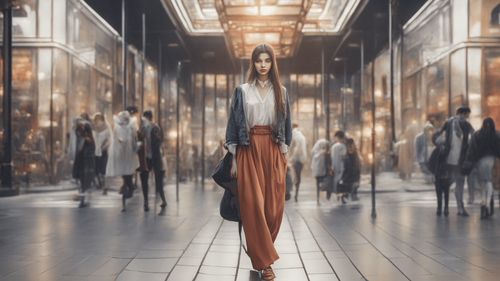
Introduction
In the ever-evolving landscape of technology, one innovation stands out as a true marvel - AI painting. The fusion of artificial intelligence and artistic expression has given rise to a new era of creativity, redefining how we perceive art, pushing the boundaries of imagination, and fostering collaborations between humans and machines. This article delves deep into the world of AI painting, exploring its origins, its capabilities, and the transformative impact it has on the art scene.
AI Painting: An Artistic Revolution
The convergence of artificial intelligence and painting has ushered in a revolution that reimagines the traditional artistic process. With AI algorithms gaining the ability to understand and replicate artistic styles, the possibilities are limitless.
Unleashing Imagination: How AI is Reshaping Artistic Creation
Enhancing Creative Techniques Through AI
AI painting introduces a fresh dimension to artistic creation. By analyzing vast datasets of renowned artworks, AI algorithms can mimic various artistic styles, enabling artists to experiment with diverse techniques effortlessly.
Personalization and Customization in Art
AI-powered tools empower artists to personalize their creations like never before. From choosing color palettes to suggesting complementary elements, AI assists artists in crafting works that resonate with their individuality.
Collaboration Between Humans and AI
The collaboration between human artists and AI brings forth a synergy that produces extraordinary results. Artists can harness AI's computational prowess to explore uncharted territories, leading to the birth of artworks that push the boundaries of imagination.
The AI Painting Process: From Pixels to Masterpiece
The intricate process of AI painting involves sophisticated algorithms that transform digital input into stunning artworks. Here's a glimpse of how it unfolds:
Data Collection and Analysis
AI painting begins with the collection and analysis of a vast array of artistic datasets. This data serves as the foundation for algorithms to learn and understand the nuances of various artistic styles.
Pattern Recognition and Stylistic Imitation
Through pattern recognition, AI algorithms can identify distinct artistic styles and elements. This enables the algorithms to imitate the brushstrokes, color palettes, and textures that define these styles.
Generating Artwork
Once the analysis and imitation phases are complete, AI generates original artworks. These pieces often blur the line between human and machine creation, embodying the essence of collaborative innovation.
Democratizing Art: Making Creativity Accessible
AI Art for Everyone
The accessibility of AI-powered painting tools democratizes the creative process. Artists of all skill levels can now experiment with digital artistry, transcending limitations and finding new avenues of expression.
Cultivating Artistic Skills
AI-powered learning platforms offer aspiring artists personalized guidance, helping them develop their skills and artistic vision. These platforms analyze an artist's progress and adapt recommendations accordingly.
From Amateurs to Professionals: Redefining Artistry
AI-generated art has found its place in the professional art scene, prompting discussions about the definition of artistry. It challenges conventional notions, leading to a broader perspective on what constitutes art.
FAQs
How does AI painting work?
AI painting involves training algorithms on vast artistic datasets to recognize and replicate different styles. These algorithms then generate artworks based on the learned patterns.
Can AI truly understand artistic intent?
While AI can analyze and replicate styles, understanding complex human emotions and intent remains a challenge. However, AI's ability to mimic various styles contributes to the creative process.
Is AI painting replacing human artists?
No, AI painting complements human artists by offering tools for experimentation and collaboration. The unique human touch and emotional depth in art remain irreplaceable.
What impact does AI painting have on the art market?
AI-generated art has disrupted the art market, prompting discussions about authenticity, value, and copyright. It has opened new avenues for both established and emerging artists.
Can AI-generated art be considered original?
AI-generated art blurs the lines between originality and replication. While AI creates unique pieces, they are born from learned patterns, leading to debates about the nature of artistic creation.
Are there ethical concerns surrounding AI painting?
Ethical concerns include issues of authorship, copyright, and the potential devaluation of human-created art. Addressing these concerns requires a balance between innovation and artistic integrity.
Conclusion
In the age of AI painting, creativity knows no bounds. The marriage of technology and artistic expression has given birth to a dynamic synergy that enhances the creative process, democratizes art, and challenges established norms. As AI continues to evolve, its impact on the art world promises to be both profound and transformative. Embracing this technological advancement opens doors to uncharted artistic realms, where human imagination and AI innovation coalesce in breathtaking harmony.